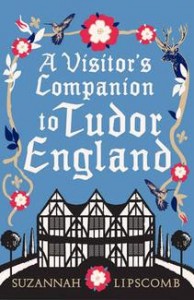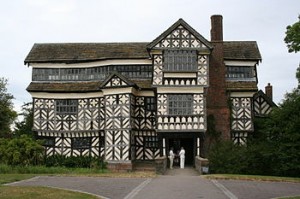When I first interviewed Suzannah Lipscomb in early 2011, she was immersed in researching and writing A Visitor’s Companion to Tudor England. Whilst talking to Suzannah about her book, I discovered that we share something in common – a love for walking in the footsteps of the great historical figures of Tudor England.
There is something magical about standing where Henry VIII or Anne Boleyn once stood, it is as though recorded in the walls of these ancient buildings are the very conversations that took place hundreds of years before. Listen closely enough and you can hear the courtiers whispering and politicking.
What really fires the imagination, is that when standing in these historical locations, it is only time and not space that separate us. If we could only peel back the layers of time, we would be there, face to face with the iconic characters of sixteenth century England.
Suzannah summed it up perfectly,
‘In the places featured in this book, the veil between the past and the present seems very thin.’ (pg. 8 )
It is in these locations, where history happened, that we can get close to the people whose lives we hope to understand.
In this wonderful book, Suzannah takes us on a journey to over fifty Tudor places, introducing us to the key characters of the Tudor age and sharing their fascinating stories.
I really enjoyed the variety of locations; we visit houses, palaces, castles, abbeys, tombs, Museums and even a tree! I also found the inclusion of information about other aspects of life in Tudor England – such as sports and pastimes, clothing and the royal progress, enhanced the overall experience.
Expect to find locations that you are familiar with, like the Tower of London, Hampton Court Palace and Westminster Abbey. But what makes this book stand out is the inclusion of less well-known houses, like Sandford Orcas Manor House and Little Moreton Hall.
Some of the locations included are ruins: Tutbury Castle, Kenilworth and Hailes Abbey, to name but a few, and these are worthy of inclusion, as the events that unfolded within their now crumbling walls, are of great importance.
Suzannah is an enthusiastic and knowledgeable guide who brings each location vividly to life through an engaging narrative.
Although academic references are not included, you can be confident that only verifiable stories and details have made the pages.
I eagerly awaited the release of this book and it has not disappointed. Judging by the amount of post-it notes that now reside on the pages of my copy, I have learnt a lot!
Tuck it under your arm on your next Tudor pilgrimage or enjoy it from the comfort of your own home. Who said that time travel wasn’t possible? Highly recommended!
I leave you now with the words of historian G. M. Trevelyan, quoted in Suzannah Lipscomb’s book:
‘The poetry of history lies in the quasi-miraculous fact that once, on this earth, on this familiar spot of ground, walked other men and women, as actual as we are today, thinking their own thoughts, swayed by their own passions, but now all gone, one generation vanishing after another, gone as utterly as we ourselves shall shortly be gone, like ghosts at cock-crow.’

















Is there a source for the wonderful quote that finishes your review, or is that of your own writing? It is marvelously written, and so moving.
Hi Marilyn, the wonderful quote is by the historian G. M. Trevelyan. Suzannah quotes him in the opening of her book. Fabulous isn’t it!
Oooh can’t wait to get this book, I’ve been to Little Morton, Tutbury and Kenilworth, many years ago, I still have the guide books though..
You are lucky to live so close to such wonderful buildings Dawn!
Well I used to Natalie, moved to N.E.Scotland 11 years ago, so I am many, many miles away now, 500 give or take, sooo not as easy to visit now, never mind, have had the enjoyment of visiting in the past, I still have the guides, and Suzannah’s book soon I hope
I love this book. It is simple and brilliant, appealing to scholars and enthusiasts alike. I only wish I could come up with something like this myself, maybe one day….